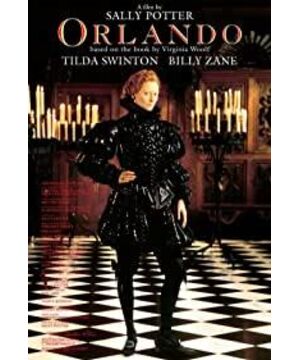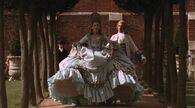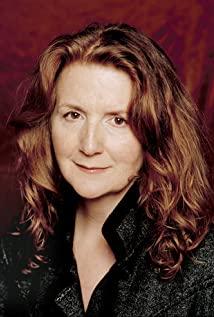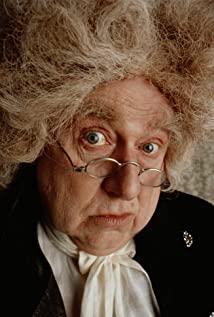A character who travels through 400 years of British history and wanders between two genders has written an epic that constructs contemporary gender and subject consciousness while presenting the British historical scene. The film retains some literary expressions of the original works of the famous British female writer Virginia Woolf, and the whole film is structured in the way of marking paragraphs and chapters in historical years. The keywords of each chapter not only summarize the growth state of the protagonist Orlando in this stage, but also frame the history of the United Kingdom for more than 400 years. Obviously, in this film, the historical picture is the basic element of the narrative, but director Sally Potter bluntly said that this is by no means a historical drama. She used a humorous tone to describe that history through Orlando's perspective, and more importantly, to build Orlando's growing personality and gender awareness.
Orlando was originally a handsome and immature prince, enjoying all the splendor of the world, and finally won the favor of Queen Elizabeth, a luxurious mansion, and the blessing of never growing old and never decaying, or saying a spell. The deaths of Queen Elizabeth and her father were the first major blows in Orlando's life. He got engaged to another royal woman and began to take responsibility for the world independently, but he still fell in love with the daughter of the Russian ambassador innocently and persistently, and broke the engagement because of it. the blow. Orlando slept for seven whole days, and the great hurt of his lost love followed him. He first tried to escape from reality in poetry and to soothe the wounds of his soul, and then he completed the maturity and further experience of his independent personality during his political activities in Turkey. The deep friendship with the Sultan made up for his lack of affection, and when he chose to fight side by side with the Sultan, Orlando truly took on the responsibilities he should have as a strong man.
As a person, Orlando's personality establishment and mature clues have become the key factors in connecting the film, but they are not the only clues. Sally Porter has never denied that her work focuses more on the issue of human gender. After the second slumber for seven days after the battle in Turkey, Orlando woke up from a handsome prince to an elegant woman. The gender change in Orlando shows the contingency of a certain gender, whether male or female, it is just an accidental arrangement, and the difference is not important. Buried within such a male or female gender identity, the same humanity is crucial. Men and women can communicate and live in harmony because they share a common humanity, which is Sally Porter's view of gender. Orlando's miraculous change in gender embodies this view, but it doesn't stop there. In fact, at the beginning of the film, the simple portrayal of Queen Elizabeth's characters also hinted at it. The Queen Elizabeth in history has called herself "a man's heart, a daughter's body". The queen in the movie maintains her inherent majesty, solemnity and strength as a historical figure. She can say to her princes and ministers without hesitation, "You have Everything is already mine," protested Yan. In Queen Elizabeth, the idea of gender ambiguity that Sally Porter wanted to express was already there.
Of course, such a work directed by a female director and devoted to the discussion of gender concepts is not born out of nowhere. When the Western feminist movement was surging and became an important part of the Western political movement, many outstanding female filmmakers in the 1970s and 1980s responded forcefully with their works. The popular Italian filmmaker Lina Wertmüller has made a major contribution to bringing gender-expressive films into the public eye by directing a comedy about women's friendship and relationships. Unlike her, Germany's Margaret von Trotta and France's Margaret Dura both adhere to obscure, heavy, and complex art-film-making strategies to explore women's issues. Agnès Varda, who is known as the grandmother of the new wave, has two works, "The Stray Girl" and "One Sings and One Does Not Sing". The former adopts a complex and deliberate narrative method to express the construction process of female subject identity. "One Sing and One Don't Sing" uses a relatively simple way to directly attack the reality of the women's liberation movement and the proposition of women's self-selection. Shanta Okman of Belgium is also an important member of this group. In more accessible works, Oakman expresses her concern for women's work and women's desire for love and physical pleasure. The works of this series of female directors are generally devoted to the attention to the feminist movement, the discussion of female subject identity and femininity, and the depiction of female desire, etc., and more emphasis on the self-sufficiency of women's personality independent of men. And Sally Potter's gender concept in Orlando is obviously a promotion or a new development of the gender concept of previous feminist films - emphasizing the communication and harmony between the sexes, rather than the struggle and differences between the sexes. As mentioned earlier, Sally Porter's discussion of gender differences is based on the same personality. No matter what gender, the progress of her life depends on her own efforts and efforts. And the difference between men and women is both accidental and insignificant. Sally Porter even claimed that "Men and women are essentially alike in many ways, and their true relationship is that of friends, that they can rely on each other. Reasonable differences should be allowed and accepted, and they should be celebrated, not It serves as an excuse for opposition, which makes life more harmonious."
In the second half of the film, after Orlando is transformed into a woman, we see a familiar pattern of the development of the female subject's personality. Women Orlando entered the Victorian era and endured various questions and insults from male groups to women in social interactions, but was completely in a state of aphasia and had no ability to refute. She could only walk into that metaphorical labyrinth angrily, which to some extent symbolizes the confused state of women when they seek to realize their own independent personality and value. And when she entered the next era in the labyrinth, and stood at the door of the labyrinth with a completely new attitude, her heart was full of confidence, she saved the injured American man Shanmti, and then she chose a free existence, Instead of leaving with Shanmu Ti, is this not a satire on the hero saving beauty? After that, Orlando gave birth to new life in the fire of war, and completely became an independent woman in the new era. This is undoubtedly a generalization of the growth process of women's gender consciousness and independent personality as a social and even political concept. . This common pattern can be understood either as Sally Porter's still inability to break free from the established traditions, or as her mastery and use of personal growth cues throughout the film—both male Orlando and female Orlando, in Experienced a process of gradual advancement of an independent personality in the experience.
Another reason Sally Porter denies this is a historical drama is that everything about history is meant to be in the present. Whether it is the relationship between the sexes, or the growth of the human subject spirit and the confusion encountered in the growth, it alludes to the current state of human existence. For example, emotional confusion and the loss of pursuing emotions are also one of the important themes. An important reason for the growth of male Orlando is his obsession with love and betrayal. When he decides to go on an embassy to the East in order to escape for spiritual comfort, he seeks some solace in the lack of love in his brotherly love with the Sultan, and there may be hints of same-sex love in it. The female Orlando, in her love with Shambh, made her independent choice by getting rid of emotional dependence. In the gust of wind, the elegant lady raised her right hand to her lover who was about to leave and said, "I wish you all the best. good luck". These expressions of the pursuit and loss of love have the power to travel through time and space and an eternal cinematic quality.
The cinematic presentation of themes and meanings must naturally be attributed to the design and use of specific film language. Woolf's pursuit of the effect beyond the historical time and space in the original book is based on the narrative method of direct dialogue with the reader. It is established by direct dialogue with the audience in front of the screen. At the beginning of the film, a voiceover introduces the audience to the identity and background of the handsome prince in the picture, but the prince suddenly looks directly at the camera and interjects. This kind of setting appears repeatedly, sometimes even just a glimpse of Orlando's camera, which can make the audience deeply feel that Orlando is detached from that specific era and has some kind of connection with the present. This direct dialogue with the audience creates a sense of humor in the historical narrative. Those visions of England's history are contrived and told through the mouth of Orlando, or Sally Potter. The director put a lot of effort into reproducing the scenes of each era. In order to distinguish the time span and the difference between the times, she used the excellent film costume designer Sandy Powell. In addition, Sally Potter is still looking for the special colors of that era in the handed down paintings, such as the Elizabethan era with gold, red and orange to convey the noble, solemn and powerful atmosphere of the whole society. Architecture is also a silent protagonist in the whole film. The majestic and luxurious mansion in Orlando plays a crucial role in both characterization and expression of the theme. The different styles of the gardens outside the mansion indicate the changes of the times. In the passage of the mission to the East, the strong oriental style required by the film is completely presented by relying on the ancient city of Kiva in Uzbekistan as a location.
In the clips that lay out the story and advance the plot, the film follows the traditional smooth editing, presents the dialogue between the characters and shapes the relationship between the characters. However, occasionally interspersed with it is a way of moving the camera with a poetic effect-when presenting the two characters in the dialogue, in order to highlight the emotional connection between them, we abandon the simple positive and negative shots, and use a back and forth. A long shot of wandering motion, wandering slowly between the two, whichever character speaks will look in which direction, and then cast his gaze to the other. This lens, while recording the dialogue in its entirety, reveals the tender spiritual connection between the pair of characters. In a scene where the male Orlando and the Sultan are drinking in the desert, the use of this shot effectively establishes the deep fraternity between Orlando and the Sultan, conveying a subtlety that may be more complex between the two affection. The two fall in love under the watchful eye of the tender camera after Orlando, a woman, brings Shamti home and cleans a section of his sprained ankle.
The first half of the film, that is, the part where Orlando is a man, the editing rhythm is slow and low, the use of long shots is more frequent, and the use of off-screen music is more restrained. This may be a choice made in consideration of the quiet and dignified temperament of the classical era and the masculine identity of Orlando. But when it comes to the female part, the editing rhythm is significantly accelerated, and the use of off-screen music is gradually increasing. Orlando travels through 400 years of history. In this long history, it is quite challenging to extract several time periods to present events and shape characters, and to connect these paragraphs smoothly. On the one hand, the transition method relies on literary means, that is, the subtitle text directly identifies the era and year, and expresses the span of time. Another way is to reinforce this surreality with the so-called Seven Days of Sleep. Immortality and gender change are both unrealistic, and the seven-day sleep maintains this surreal sense and completes the effect of advancing in a large time span. The third method is a carefully designed transition clip, a scene in which a female Orlando travels through a maze, which has the meaning of a time tunnel at this time. The cut picks up as the Victorian Orlando walks angrily into the labyrinth in a large pale dress. Orlando's figure flashed in and out, and the moving clips maintained the continuity of the original action, but her image suddenly changed, the skirt became simpler, the color became a cold blue, and her face became more beautiful. Mature and times have changed, but the coherent action and constant off-screen music keep this transition fluid. When Orlando said goodbye to Shanmti, there was the sound of aircraft bombing in the sky. She raised her head to look at the sky, the black field, and then the modern Orlando stumbled on the battlefield. In the distance, gunfire was roaring, which was the same as the previous aircraft bombing. To form a unity, the sound becomes the opportunity for this transition. This way of expressing the advancement of time is really the most cinematic means.
British films that have always existed in the shadow of Hollywood once caught the last train of the new wave of world cinema with the "kitchen sink" films of the 1960s, but they were on the verge of a devastating decline in the 1990s, and the top 20 local films in the UK box office were only a handful. It can be counted that the audience pays more attention to Hollywood movies. And outstanding directors like Alan Parker and Tony Scott have all gone through the process of being supported by American capital in the UK and then going to Hollywood for further development after starting their careers with local creations. Although "Four Weddings and One Funeral" in 1994 earned an excellent record of 250 million US dollars worldwide, it is still a special case, and it is difficult to fundamentally reverse the decline of the entire British film industry. went to Hollywood. A class of self-taught young directors called "Brit-pack", represented by Danny Boyle, who have achieved good results, created films like "Shallow Grave" and "Trainspotting" for young people. The works that the audience loves will take time to become a big one. In terms of art film creation, Derek Jarman has entered the post-creation stage, and Peter Greenaway is still struggling on his own, and Sally Porter should also be regarded as an important colleague. She has been shooting 8mm short films since she was a teenager, and she is definitely a talented artist. In addition to directing and writing the screenplay for this "Orlando", she also composed the music for the film's theme song. The 4 million pounds invested "Orlando" also encountered various difficulties in financing during the production stage. Sally Potter tried to explore international cooperation in the production of the film. The filming of the film spanned the United Kingdom, Russia, and Uzbekistan. The film crew Members come from many countries in Europe. This international operation method is not only conducive to expanding the ideas of British film creation methods, but also brings a unique flavor to this film. A literary masterpiece published in 1928 was finally presented to a world audience by Sally Potter in such a gorgeous and profound, wonderful and romantic way. As her second feature film, the film has won awards at many high-level film festivals around the world, including the Venice Film Festival. In the subsequent "Tango Lesson", Sally Porter still insisted on her consistent gender expression, and her feminist creation also provided the possibility to expand the expression space of British film diversity.
View more about Orlando reviews











